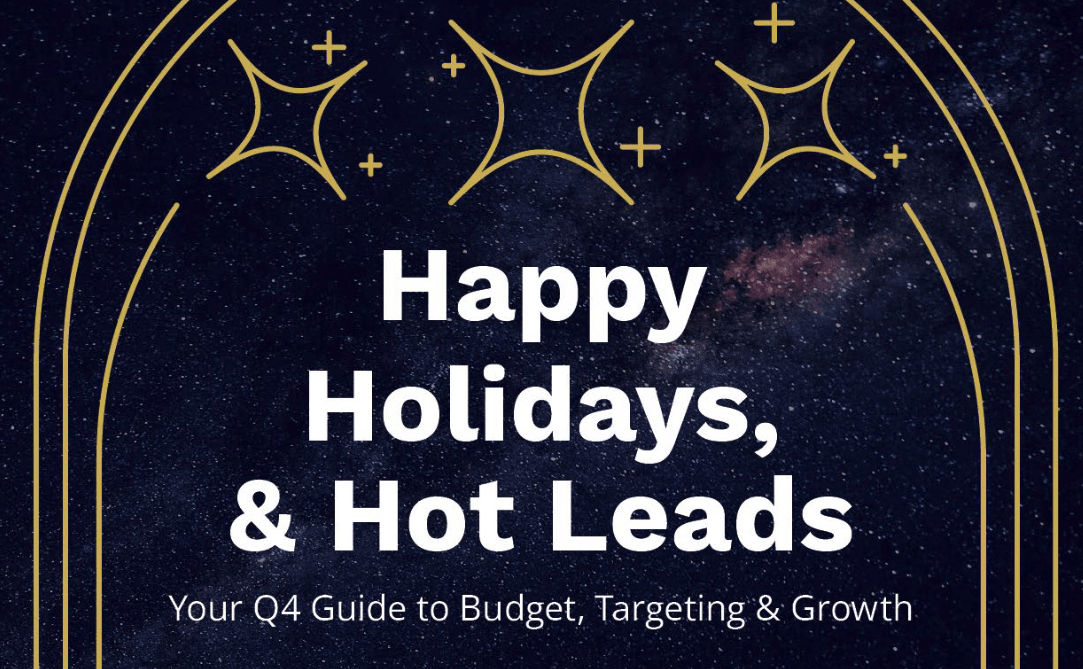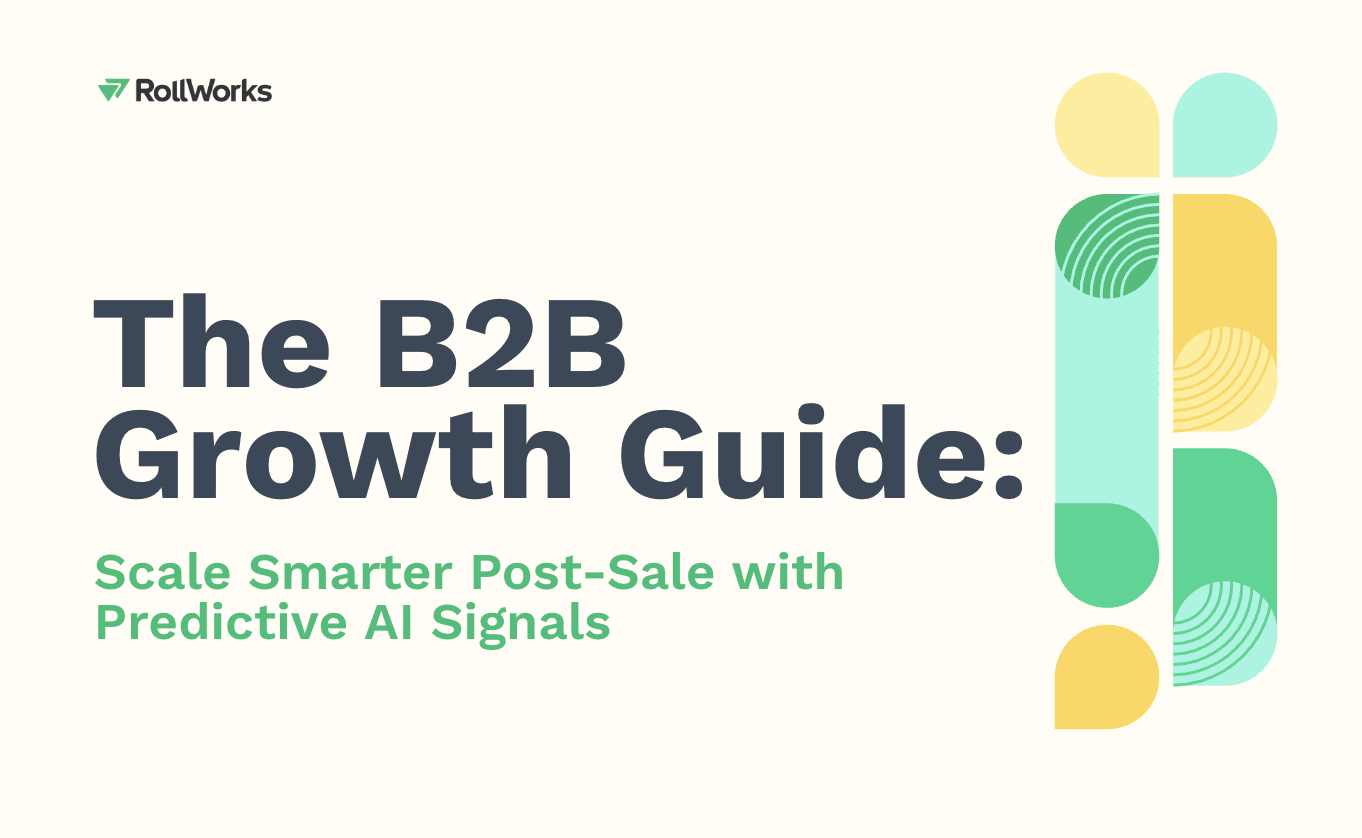A B2B salesperson’s day is rarely predictable. They send outreach emails and follow up on emails awaiting a response. They make calls to warm leads, marketing qualified leads and research prospects. They also spend a ton of time combing through their list of contacts and leads while choosing who to reach out to, scheduling each of them into their calendars. They do all this and more with the hopes of getting in touch with the right person at just the right time. Hubspot and RollWorks are a powerful combo to make sure every marketing dollar is being well spent.
This last part of the job can be particularly tedious — salespeople thrive on connecting with customers, building relationships, and closing deals, not combing through infinite rows of data — and it’s not always as effective as sales leaders would like it to be.
Marketing teams are also looking to connect with customers and prospects, whether it’s to work with them on promotional initiatives or to send them a series of newsletters nudging them to consider a product.
Marketing and sales teams do better when they’re aligned, meaning they are focused on the right firmographics like target audience, on the right segment of an industry, and on selling the right product at the right time. That’s why it’s so important to know who your customers and prospects are. There are many ways to gather ABM data, but once you have it, keeping it organized and usable is key to seeing results.
That’s where RollWorks and HubSpot come in. Hundreds of B2B businesses use the RollWorks ABM integration with the HubSpot CRM to improve demand generation, overall conversions, and time to deal.
As a machine learning-powered platform for B2B marketing and sales teams, RollWorks improves conversion and drives growth by identifying and prioritizing the right leads at the right time. HubSpot is a powerful, easy-to-use CRM software that helps businesses keep track of their customer and prospect information, preferences, purchases, and behavior to improve sales and marketing efforts of all kinds, from email newsletters to outbound sales calls. Since HubSpot offers next-level marketing and sales automation, it can also incorporate RollWorks data. Together they make a powerful addition to your B2B marketing tech stack.
These two platforms are a natural fit together. With this integration, you can identify and segment the various target audiences found in your HubSpot contact list data, and with the power of RollWorks’ machine learning capabilities, you can prioritize which accounts to contact now and which ones might be better to contact down the line. You can also use this integration to set up targeted digital ads for your ideal customers and to suggest net-new accounts that are in-market that are a good fit. And thanks to the systems’ compatibility and bidirectional sync you’ll save time on repeated data entry while. increasing the impact of each outreach effort.
Let’s explore how companies are using RollWorks AI-powered ABM targeting with the HubSpot CRM to maximize sales and marketing activities and connect with more engaged contacts.
6 Ways the RollWorks + HubSpot Integration can Improve ABM Targeting (And Boost ROI!)
There are countless ways to leverage the power of RollWorks and HubSpot together to improve marketing and sales efficiency—and bring more value to the data you collect. Here are a few ways for B2B teams to use the RollWorks ABM integration with HubSpot.
1. Improves lead prioritization
RollWorks improves sales and marketing ROI by eliminating much of the guesswork related to who to reach out to on a particular day. It segments HubSpot audiences based on fit score, intent data, and engagement signals to prioritize accounts based on how ready they are to buy, among other factors. It also uses the HubSpot CRM data to generate suggestions for net-new high-fit accounts that are also in-market.
RollWorks does this by using machine learning to identify customers’ ideal customer profile (ICP) fit and scoring their accounts so any sales or marketing manager can easily identify which account to reach out to based on firmographic data. It layers several factors, including intent and engagement signals, to determine accounts that are in-market and to find new ones — and it adds this data right into the HubSpot CRM.
2. Enables cross-channel campaigns with best-in-class targeting
Targeted ads are a huge part of how many companies are growing their customer bases. On Instagram and Facebook ads have been encouraging customers to buy for years — and it really works.
RollWorks helps teams run effective cross-channel campaigns, including targeted ads, to both known and unknown contacts at target accounts. You can set targeted ads to display in front of your ideal customers and across entire buying committees, or try out different segments at different times and track what’s worked best.
It’s the best, easiest way to deliver the right message, on the right channel, at the right time, to the right audience. Doing so will drive awareness among unknown contacts and nurture known contacts by reaching them with relevant digital advertising and running automated multi-channel engagement ABM programs like email nurture flows.
3. Eliminates hours of data entry and cleanup with bi-directional syncing
Keeping customer data up to date is an important part of sales work. People move on from companies all the time, and it’s useless for a salesperson to waste time emailing or calling someone who’s now at a different company.
But bi-directional syncing shares HubSpot company records data into RollWorks account lists, and RollWorks data back into HubSpot. It significantly reduces repeated data entry, human error, and the need for data cleanup — but best of all, doing so helps teams measure ABM effectiveness and inform their workflows for each day, week, month, and year.
Users can also create workflows and custom reports in HubSpot using RollWorks data so they can easily share out wins, progress, and areas of opportunity with various teams and stakeholders.
4. Identify high-priority accounts for marketing and sales campaigns
With HubSpot contact and account data along with RollWorks’ ABM capabilities, teams can use machine learning to identify various firmographics and ideal customer profiles (ICPs) and set up sophisticated (and smarter) lead scoring.
Layer intent and engagement signals to determine which accounts are in-market, and find net-new accounts that match the current ICP profile. With this information, you can augment existing HubSpot lists, and improve marketing and sales ROI thanks to better targeting and pre-qualification.
5. Engage high-quality contacts via ads, targeting both known and new audiences
Digital ads represent a huge cost for most B2B businesses. The average cost-per-click (CPC) for digital marketing ads is over $3, and almost 70% of marketers consider advertising to be very important to their B2B marketing strategy. Optimizing ad campaigns, and creating more strategic audiences is critical for marketers to stay within their ABM strategy and see valuable conversions. If a paid ABM program is wasting more money than it’s making, it isn’t worth it to run.
With RollWorks and HubSpot, users can drive awareness and nurture existing contacts by reaching target accounts selected via machine learning, then automating multi-channel engagement campaigns.
6. Leverage RollWorks ABM data in HubSpot to create custom workflows
With RollWorks ABM data in HubSpot via the bi-directional sync, users can create workflows, ABM programs, and campaigns that are more targeted, and more effective. Sales teams can create automated workflows that offer assistance when a prospect has visited the pricing page more than 3 times in a week. Marketing teams can send nurturing campaigns to contacts who haven’t talked to sales or marketing, but who have visited the website or opened emails. The possibilities are endless!
HubSpot and RollWorks: A Powerful Duo
Don’t leave your lead prioritization to chance. Empowering your sales and marketing teams with RollWorks’s machine learning and HubSpot’s powerful and easy-to-use CRM sets them up for success. In fact, RollWorks is the most downloaded ABM app in Hubspot’s ecosystem. More ABM data, better targeting, and automated prioritization saves your sales team time and increases conversion across the board, helping you grow your business.
HubSpot customer SnapFulfil created a sales-aligned ABM program using the RollWorks integration that increased website traffic by 27% and had a 6% conversion to MQL. Other users comment that the integration has helped them “reach nearly half of our target accounts and move them along in the buyer's journey,” and “reach key buyers at target accounts that we may not be able to reach otherwise”.
About the Author
Follow on Linkedin More Content by Katherine Boyarsky, HubSpot




























